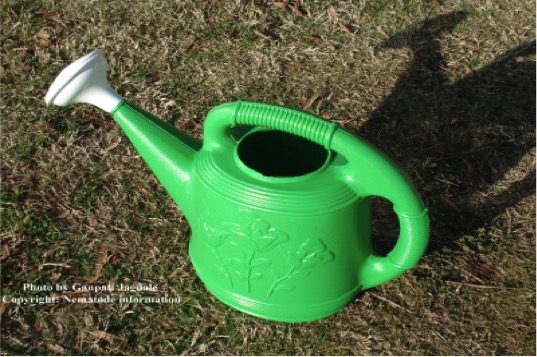Japanese beetle (Popillia japonica) adults are oval shaped, 1.5-inch long and shiny metallic-green in color (Photo 1). The mature grubs of Japanese beetles are whitish in color with yellowish-brown head capsule and three pairs of thoracic legs. When disturbed, grubs form typical C- shape (Photo 2). Pupae of Japanese beetles are pale creamy to greenish in color.
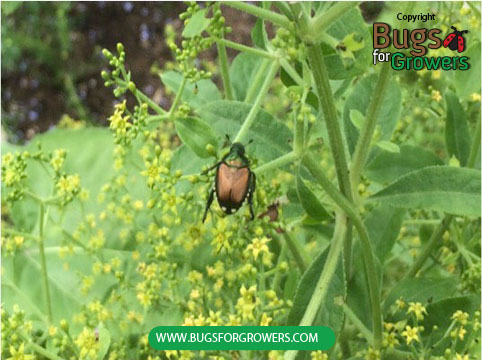
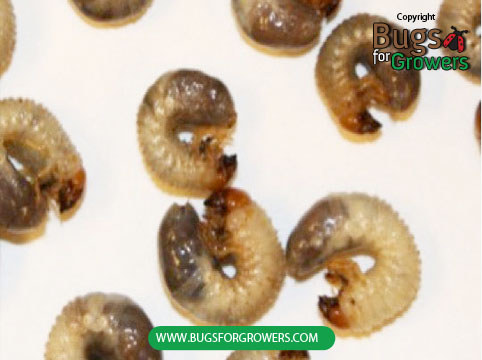
Japanese beetles are serious pests of many plant species including turfgrasses. Japanese beetle grubs mainly cause feeding damage to roots but their adults cause feeding damage to flowers (Photo 3), fruits, leaves and twigs. Symptoms of feeding damage caused by grubs include formation of localized patches of dead turfgrass in the yards and golf course greens due to severely pruned roots by grubs. As the feeding activity of grub progresses, the small patches of dead turf join together and form the large patches. Due to severely pruned root system, dead turf becomes very it loose and can be easily picked up with hand like a piece of carpet. The most convincing sign of presence of Japanese beetle grubs in the lawn is that the infested areas of lawn is dug by raccoons, skunks or birds that are looking for grubs to feed on them. In contrast, adult Japanese beetles voraciously feed and destroys leaves, flowers and fruits. Heavy infestation of Japanese beetles can completely skeletonize leaves and eventually defoliate the plants.

Life cycle of Japanese beetles is usually completed in a year. Briefly, adults of Japanese beetle emerge from pupae in the late June through July and start feeding on leaves, flowers and fruits of different plants. The mated females then lay eggs about 1-2 inches deep in the soil mostly near to the roots of grass. These eggs hatch early in the August into first instar grubs that start feeding on grass roots. While feeding, these grubs complete second and third instars from August through October. In October, as temperature starts cooling down, third instar grubs will move deep into soil for overwintering. During winter season (November through March), these grubs become immobile and stop feeding. Early in the spring, when temperature begins warming up, overwintering grubs will move back into the turf root-zone and resume feeding on turf roots until they become mature. These matured grubs will then pupate in the soil early in the June. The emergence of adults from pupae begins from the end of June through the end of July, females will then lay eggs and life cycle continues.
The emergence of adults of Japanese beetles have already started at the end of June and it will continue throughout July. Therefore, now is the best time to stop emergence of adults of Japanese beetle by targeting and killing their grubs and pupae in the soil.
The best organic option to kill both grubs and pupae of Japanese beetles is to apply beneficial entomopathogenic nematodes in the home and recreational lawns, and golf courses. Since some mature grubs are trying to pupate and adults are trying to emerge from pupae, both grubs and pupae are easy targets for beneficial entomopathogenic nematodes like Heterorhabditis bacteriophora (Photo 4) and Steinernema carpocapsae (Photo 5).
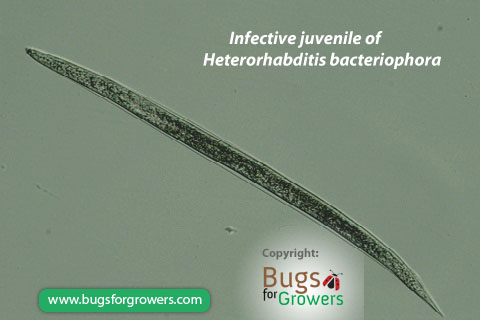
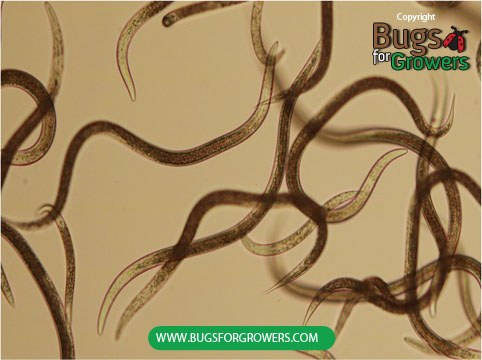
Both of Heterorhabditis bacteriophora and Steinernema carpocapsae nematodes can kill both grubs and pupae of Japanese beetles within 48 hours after their application. Briefly, when the infective juveniles of these beneficial entomopathogenic nematodes applied individually or together to the soil surface or thatch layer, they will move in the soil and find Japanese beetle grubs or pupae. Once they find a grub and/or pupa, they will enter into their body cavities through their mouth, anus and spiracles. In the insect body cavity, S. carpocapsae will release symbiotic bacteria called Xenorhabdus nematophila or H. bacteriophora will release symbiotic bacteria called Photorhabdus luminescens from their gut in the insect blood. Once in the blood, bacteria will multiply rapidly, cause septicemia and kill Japanese beetle grubs or pupae usually within 48 hours after infection.
For the effective control of Japanese beetle grubs and pupae, apply beneficial entomopathogenic nematodes, H. bacteriophora and/ or S. carpocapsae at the rate of 23000 nematodes per square foot area to the soil surface or thatch layer using either water cans (Photo 6) or traditional knapsack sprayers. The beneficial nematodes are generally susceptible to UV radiation. Therefore, it is recommended to apply nematodes late in the evenings. Since nematodes need a film of water for their easy movement in the soil, apply them when there is enough moisture present in the soil. To maintain optimum moisture level in the targeted areas, applying irrigation before and after application of nematodes so that irrigation water will provide film of water for their movement and wash them from grass blades into soil.
